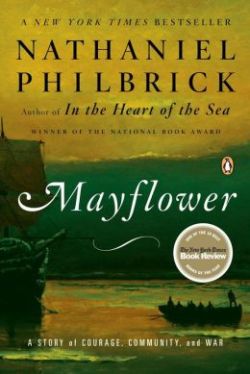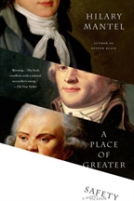I’ve been terribly remiss with writing these reviews, but I wanted to get this one in before Thanksgiving!
As children we were all told about the Pilgrims’ landing at Plymouth, their initial meetings with Native Americans, and warm and fuzzy story of the first Thanksgiving. And there it ends. (We hear something about witches later on, but things get a bit muddled until the 18th century.) But what REALLY happened, before and after?
This is something Nathaniel Philbrick (author of In The Heart of the Sea which I SO want to read), explores in his excellent book. He spends a little time on the background of the Puritan community, covering their flight from England and decade-long stay in Leiden. We are introduced to William Bradford, William Brewster (so many Williams!), John Howland, the young indentured servant who fell off the Mayflower and had to be fished out of the sea. (Full disclosure: according to my Gram, he’s one of my ancestors.) And of course, the very short Miles Standish. He was short! And violent. But oh so short! Surprisingly, the description of the voyage is not long considering the book title. The real meat of the story comes later.
The author gives a beautiful, detailed account of the Puritans’ encounters with the Native Americans and their fragile alliance with the Wampanoag sachem Massasoit. Illness, near-starvation, the rise of other, more successful colonies. The daily struggles, the political rivalries in English and Native American communities. Friendship and mistrust on either side. This all comes to a head in the very bloody King Philip’s War, 55 years after the landing at Plymouth.
What struck me most about this book was how even-handed it is. Their are no real villains (ok, maybe one or two), and no real heroes. These were real people, and they were all remarkably human and well-rounded. Philbrick offers an unflinching narrative of the both the cruelty of some and the struggles of others to rise above it.
I recommend it.

